
Dry Season in Hoi An: What to Expect & How to Make the Most of It
Are you planning to discover Hoi An with its iconic yellow walls and vibrant lantern displays and its stunning, clear blue beaches? Then you're getting ready for Central Vietnam's dry season, often dubbed the "Golden Time" for travelers! This detailed guide from Hoi An Memories Land reveals insider tips for navigating the dry season, suggesting ideal activities to ensure your trip is unforgettable.
1. What is the Dry Season in Hoi An?
1.1 Duration & Timing (Which Months)
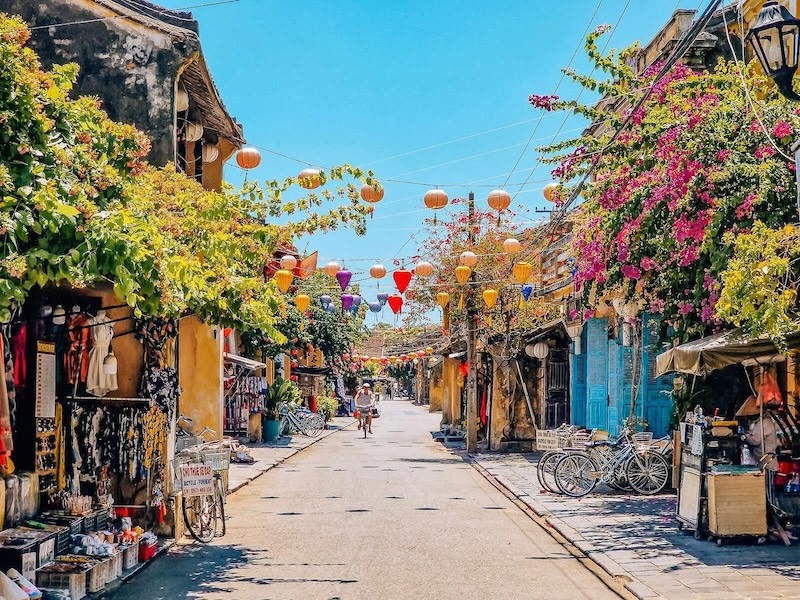
The dry season in Hoi An is extensive, typically spanning seven months, running from February through August. This long duration offers travelers plenty of choice, but the weather experience differs significantly between the early and peak months.
1.2 Typical Weather Conditions: Sunshine, Temperature, Humidity
During this long stretch, the weather is generally clear, bright, and stable, but it transforms noticeably between the early and peak months of the dry season.
- Early dry season (February – April) offers the most comfortable weather for sightseeing. Temperatures are pleasantly mild, typically ranging from 23°C - 28°C. You can expect gentle sunshine, low humidity, and minimal rain. These ideal conditions are perfect for cycling, leisurely exploring the Hoi An ancient town, and participating in cultural tours without the intense heat.
- Peak dry season (May – August) is defined by intense summer heat. Temperatures spike, ranging from 30°C to 37°C(or higher). The sun is intense, the heat is high, and there is virtually no rain. While challenging for midday exploration, these conditions are optimal for beach relaxation, diving, and water sports, as the sea is at its warmest and clearest.
1.3 Comparison with Wet Season: Advantages & Drawbacks
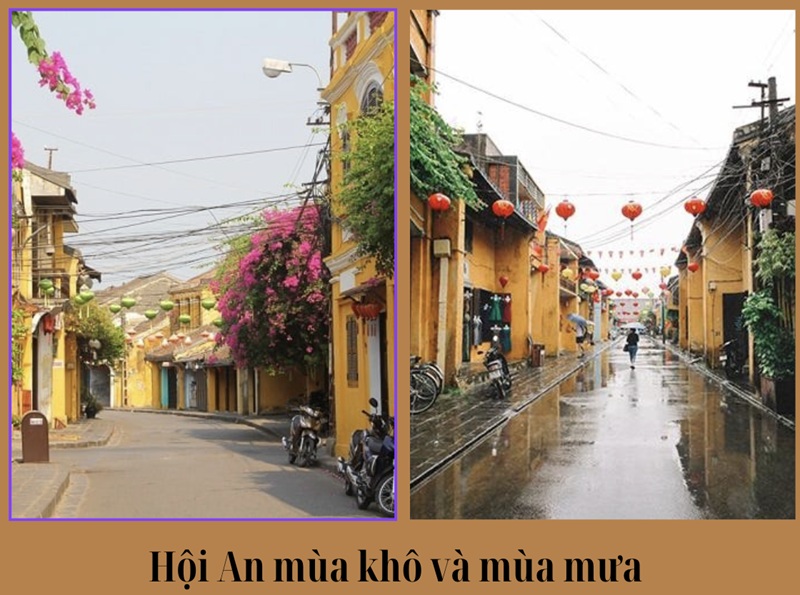
|
Category |
Dry Season |
Wet Season |
|
Weather & Sky |
Bright, sunny skies, ideal for photography and outdoor scheduling. |
Frequent, heavy rainfall and risk of street flooding (especially Oct-Dec) |
|
Temperature |
Extremely high temperatures (23°C - 37°C) and high UV index. |
Cool and pleasant temperatures (20°C - 23°C, suitable for walking, but can be chilly in Dec-Jan. |
|
Beach & Outdoor Activities |
Optimal conditions for scuba diving, snorkeling, and water sports (calm, warm, clear water). |
Rough seas, poor visibility; outdoor sightseeing and activities are often interrupted by rain. |
|
Price & Crowds |
Travel costs (accommodation, tours) are significantly higher (15-30% increase); tourist areas are very busy and bustling. |
Significant cost savings; quiet, few tourists, minimal waiting times at attractions. |
2. Best Sub-Periods within the Dry Season
2.1 Early Dry Season (Feb–Apr): Mild and Pleasant
Temperatures are mild (23°C - 28°C) and comfortable, perfect for leisurely walking or cycling through the countryside. Crowds are manageable, and costs are relatively gentle before the summer peak. It’s the ideal time for those prioritizing comfort and cultural immersion over intense beach time.
2.2 Peak Dry Season (May–Aug): Hot, Sunny, Beach-perfect
This period is defined by intense heat but delivers the absolute best conditions for water lovers. The sea is at its warmest and clearest, making it optimal for diving and island hopping. If your main mission is to soak up the sun, swim, and play water sports, endure the heat and embrace this beach paradise phase.
3. Activities & Experiences Ideal for Dry Season
3.1 Beach & Island Trips (Cua Dai, An Bang, Cham Islands)
The hot season, particularly from May to August, is the absolute prime time to escape the Hoi An ancient town and immerse yourself in the ocean.
- Cham islands diving & snorkeling: With the calmest seas and clearest water of the entire year, this is the perfect opportunity to join snorkeling tours (with a breathing tube) or diving tours (with scuba gear) to explore the vibrant, colorful coral reefs. Cham Islands during this period showcase their most brilliant beauty and strongest underwater vitality.

- Relaxation at An Bang and Cua Dai beaches: An Bang Beach is famous for its fine white sand and cool green coconut groves. You should head to the beach in the early morning or late afternoon (after 3:30 PM) to avoid the intense sun. Enjoying a cold coconut water, lounging on a deck chair, and watching the sunset over the sea is an unmissable experience.
- Exciting water sports: Participate in lively activities like paddleboarding, kayaking, or parasailing over the ocean to cool down and enjoy the vibrant summer atmosphere.
3.2 Exploring Hoi An Ancient Town & outdoor sightseeing
To comfortably explore the Hoi An ancient town under the summer sun, you need to adopt a "Beat the Heat" strategy:
- Sunrise photography: Start your day early, around 5:30 AM to 7:00 AM. Hoi An ancient town at this time is incredibly quiet, the air is cool, and the gentle golden sunlight creates "magical" moments for photography.
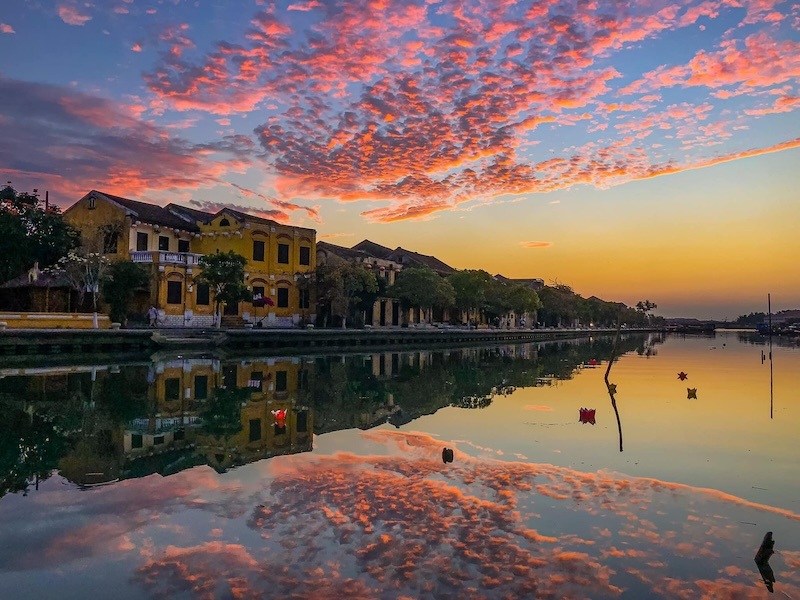
- Indoor midday sightseeing: Dedicate the time from 11:00 AM to 3:00 PM to visit shaded or indoor attractions like Tan Ky Old House, Fujian Assembly Hall, or various museums. This is also the perfect time to get custom clothes tailored at famous tailor shops or enjoy cool dining in a restaurant.
- Evening lantern stroll: From around 6:00 PM onwards, when the sun sets and the lanterns begin to light up, Hoi An puts on a shimmering, magical new coat. This is a wonderful time to take a boat ride on the Hoai River and release flower lanterns, enjoying the cool evening atmosphere.
3.3 Joining cultural events & local festivals
The dry season, especially the early months, is festival season, offering unique cultural experiences:
- Lantern festival (Hoi An old town night): This usually takes place on the 14th day of every lunar month. Electric lights and street lamps are switched off, replaced by the warm glow of lanterns and candles. You'll see folk games, traditional music, and a strong local festive atmosphere.
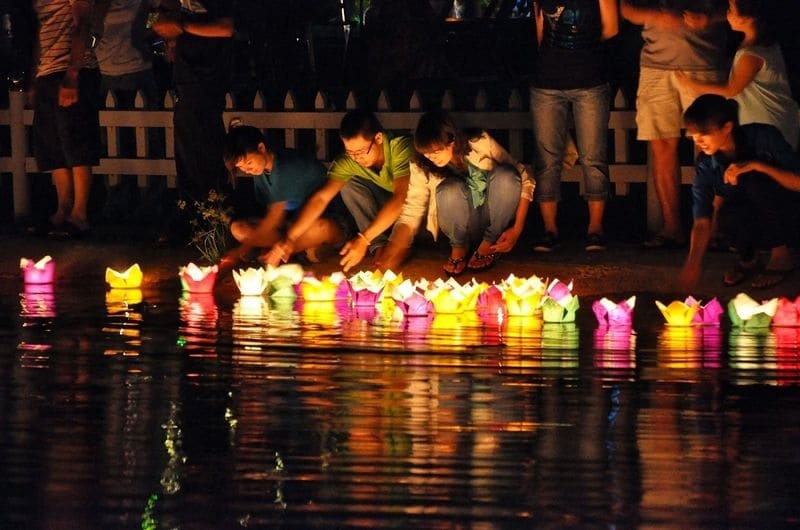
- Cau Bong festival (Tra Que vegetable village): If you visit around the beginning of the year (Lunar January), you can participate in this ritual praying for favorable weather and abundant harvest, deeply reflecting the identity of Hoi An's farming community.
- Traditional cooking classes: Join a class to learn about Hoi An specialties like Cao Lầu and Mì Quảng. This is an enjoyable, entertaining activity that also serves as an effective way to beat the midday heat.
3.4 Photography & countryside experiences
The bright sun enhances the colors of the surrounding countryside:
- Tra Que vegetable village: Cycle here early in the morning to see the vibrant green plots and inhale the fresh herb aroma.
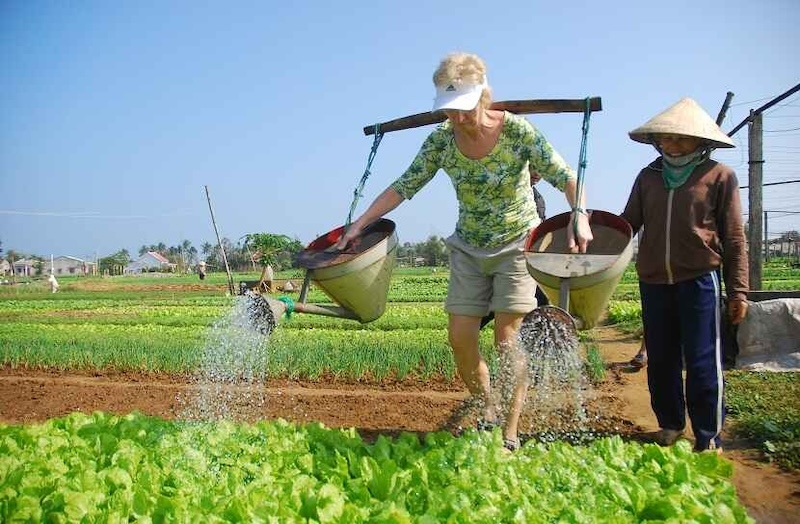
- Thanh Ha pottery village: Visit this traditional craft village to try your hand at shaping clay; the open spaces offer a slightly cooler atmosphere than the crowded town center.
- Bougainvillea blooms: The heat encourages the famous bougainvillea flowers to bloom profusely, draping over the old yellow walls, creating stunning and colorful photo backdrops.
4: What Travelers Should Be Prepared For
4.1 Sun protection & hydration
Keeping cool and hydrated is the single most important step to truly enjoying Hoi An's brilliant sunshine. Here are some items you must to have in your luggage:
- Pack a water-resistant SPF 50+ sunscreen and commit to reapplying every 2-3 hours.
- Wide-brimmed hats, sunglasses, and light, bright-colored clothing (cotton or linen) are essential to reflect heat.

- Carry a reusable water bottle and drink constantly. Pack Oral Rehydration Salts (Oresol) as a crucial backup against heat exhaustion and dehydration.
4.2 Crowds & higher prices in peak months
Since this is peak tourism season, you should prepare in terms of planning and finances.
- Book early: To secure the best rooms and manageable prices, book accommodation and major tours 1-2 months in advance, especially if traveling between May and August.
- Plan a flexible budget: Just keep in mind that costs for things like taxis, meals, and souvenirs can be around 15–30% higher than the off-season rates. Setting aside a small financial buffer can ensure your trip stays stress-free.
4.3 Beach and water safety
While the sea is calm, safety remains paramount. Always check the quality of rented equipment (life vests, fins, kayaks) before using them. When on island tours, listen carefully to guide instructions and never swim outside designated safe zones. Use a dry bag for all electronics when near water.
5. Advantages of Visiting During the Dry Season
Traveling to Hoi An in the dry season is easy and brilliant:
5.1 Stable weather for outdoor activities

With clear skies and consistent sunshine, you can fully commit to your itinerary from morning till night without fear of sudden downpours or floods derailing your plans. This stability is crucial for planning multi-day excursions or activities like cycling and walking tours.
5.2 Best conditions for beach & water sports
The ocean is at its peak of beauty. The waters around An Bang and Cua Dai beaches, as well as the Cham Islands, are calm, clear, and vividly blue. This ensures the best visibility for snorkeling and scuba diving and guarantees the safest and most enjoyable conditions for swimming and water sports.
5.3 Clear skies & long daylight hours
The sunlight brilliantly illuminates the iconic yellow walls and colorful bougainvillea, making the Hoi An ancient town luminous and alive. The long daylight hours allow you to maximize your exploration time.
6. Disadvantages or Things to Consider
However, visiting Hoi An in the dry season comes with trade-offs that require strategic planning, due to:
6.1 Strong heat and sun exposure

From May to August, the heat can be scorching, often soaring above 35°C. Daytime sightseeing around Hoi An between 11:00 AM and 3:00 PM can be exhausting and increases the risk of heatstroke
6.2 Higher costs during high season
Due to the influx of tourists, the dry season (especially May–August) is the peak travel season. Expect accommodation, flights, and tour prices to be significantly higher (up to 15-30%) compared to the wet season. You must book well in advance.
6.3 Busier tourist areas
The Hoi An ancient town, beaches, and top attractions are crowded and bustling. If you crave the ancient town's famed tranquility and peaceful atmosphere, you might find it diluted by the constant flow of people and noise.
7. Recommendations for Different Traveler Types
Hoi An offers diverse experiences based on when you choose to visit:
7.1 For comfort & fewer crowds → Feb–Apr
The early dry season (February to April) is the perfect choice for those who want to experience the tranquil, original side of Hoi An and prefer serenity. The weather is mild, pleasant, not too hot, and tourist numbers are not yet overwhelming, allowing you to freely enjoy the following experiences:
- Hoi An ancient town exploration: You can cycle or stroll through the streets in the early morning (before 8:00 AM) to feel the quiet atmosphere and take unobstructed photos.

- Suburban visits: Discover Tra Que Vegetable Village and Thanh Ha Pottery Village in the cool air. Alternatively, join a lantern-making class or a traditional cooking class.
- Culinary delights: Since it's less crowded, you can enjoy specialties at famous local eateries (Cao Lầu, Mì Quảng, Bánh Mỳ Phượng) without queuing for too long.
- Hoai river trip: Experience a boat ride on the Hoai River in the late afternoon to watch the sunset and enjoy the fresh, cool evening air.
7.2 For beach & sunshine lovers → May–Aug
If you are a true beach lover, craving activities under the brilliant golden sun and wanting to experience the most beautiful beaches, then the May to August period is definitely the time for you. Although the Hoi An ancient town can be fiercely hot, this is when the sea reaches its peak beauty: the water is jade-blue, calm, and incredibly warm.
- Scuba diving (Cham Islands): For those seeking more adventure than snorkeling, try scuba diving to explore deeper coral reefs and the rich marine ecosystem, fully experiencing the underwater ocean space.
- Kayaking / SUP on the Hoai river: This is a fun physical activity that allows you to view the Hoi An ancient town from a completely new angle, especially beautiful at sunrise or sunset.
- Off-road tour (Jeep/Motorbike): Rent a Jeep or join a guided motorbike tour to discover coastal roads and the nearby Hai Van Pass. Experience the thrill on the mountain pass, admiring the majestic scenery of Central Vietnam's mountains and sea.
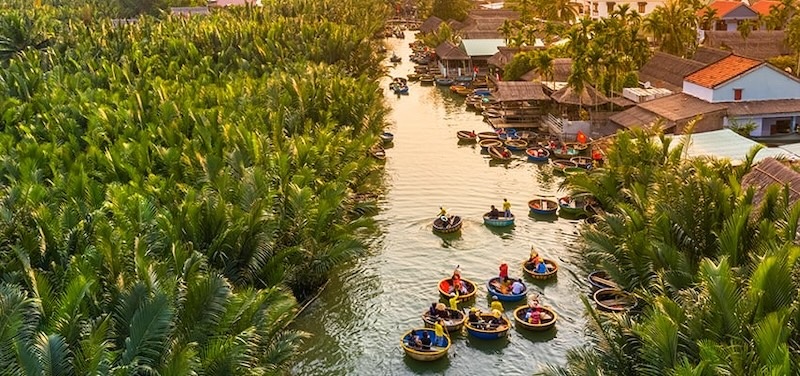
- Basket boat riding and racing (Bay Mau Coconut Forest): More than just an ecological experience, this activity is full of laughter as you try your hand at spinning the basket boat or watching the thrilling performance of local residents.
- Marble mountains climbing (Da Nang): You can combine your trip to Hoi An with an excursion to the Marble Mountains (about 30 minutes away by car). This climbing challenge will help you explore spiritual caves and view the entire Da Nang beach from above.
7.3 For photographers & culture seekers → transitional months
If you seek a serene, deep beauty and high-art photography, aim for the transitional months of January and September. These months mark the shift between the rainy and dry seasons. The temperature is moderate, the air is cool, and the soft light is perfect for relaxed photography and cultural discovery.
- January carries the last breath of winter, with lingering soft rain just stopping. Exploring Hoi An now reveals a rare tranquility and clarity. The soft, dreamy light after the rain creates a natural vintage filter, highlighting the old yellow walls. This is the golden opportunity to capture peaceful, person-free photos of the Hoi An ancient town, rich in poetry and depth.
- September is the symphony between summer and autumn. Sudden early-season showers are brief but leave small puddles on the street pavement. Take advantage of this unique moment! When the lanterns begin to light up, their glow reflects brilliantly on the wet surface, creating magical 'mirror' photos full of art. This experience is not just about photography but about feeling the fragile, romantic, and unique grace of Hoi An during the seasonal change.
7.4 Unique Cultural Experience: Hoi An Memories Show
While outdoor activities in the Hoi An ancient town might be affected by the fierce summer sun or winter rain, there is one unique cultural experience in Hoi An that always guarantees a spectacular and complete experience for visitors, regardless of the weather - Hoi An Memories (Ký ức Hội An) real-scene show.
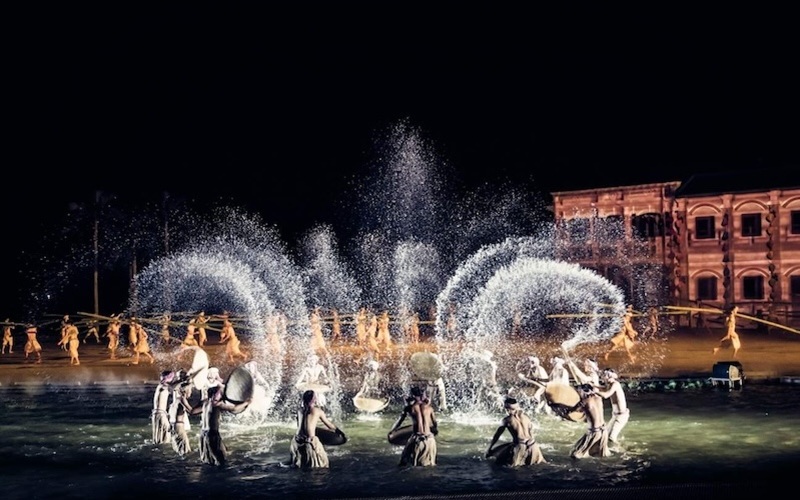
This show is not merely an artistic performance but a 'time machine' that transports you back 400 years, recreating the brilliant history of the ancient Faifo trading port. It is an ideal choice for all visitors, especially during the hot, dry season or on rainy days.
The performance utilizes a vast 25,000 square meter outdoor stage, featuring nearly 500 professional actors. Combined with modern lighting, sound, and 3D effects, Hoi An Memories show transcends the limits of a regular show, becoming a peak artistic masterpiece.
Whether you prefer the 'chill' style seeking tranquility in the early dry season, or the 'all-out' fun with beaches and islands during the peak summer, Hoi An always offers compelling stops. We hope this dry season guide helps you turn the hot season into a brilliant, complete, and memorable journey in the ancient Faifo trading port!
-
Hotline: 1900 63 66 00
-
Press 1 For tickets
-
Press 2 For Customer Service
Latest news

Da Nang’s Weather & Seasons: When to Visit for the Best Experience

Hoi An’s Weather Guide by Month: Best Times & Seasonal Travel Tips

Best Hoi An Wedding Photoshoot Locations in 2025 and Tips for a Perfect Album

Travel Guide and Itinerary for Visiting Hoi An from September to December













Comment